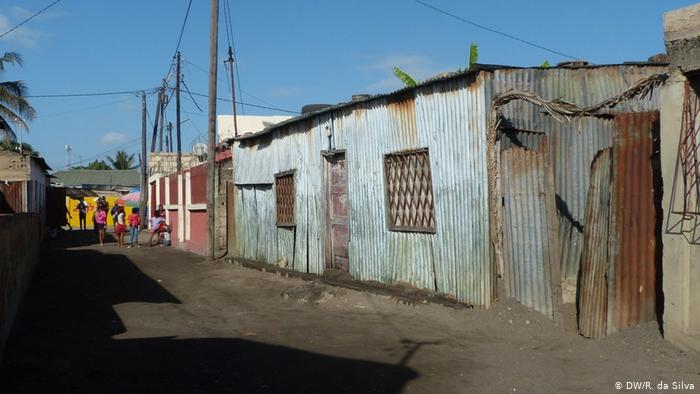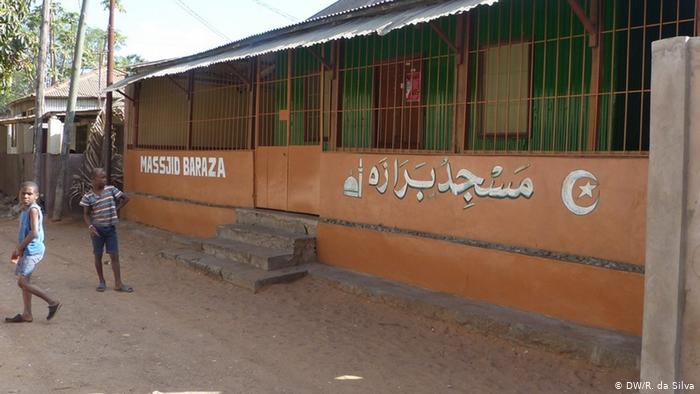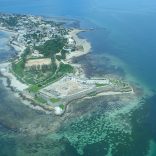Énia Lipanga represents Mozambique at the International Conference on Cultural Industries
Mafalala: A neighbourhood of huge cultural wealth – Photos

Photos: DW
When talking about peripheral neighbourhoods of Maputo, Mafalala is undoubtedly the “ex-libris”. Names like José Craveirinha or Eusébio, to name only a few, give the neighbourhood its fame. But it also has its dramas, and crime is one of them.
Wooden and zinc houses
The emblematic neighbourhood of Mafalala is one of the oldest in the capital, Maputo. Located in the centre-west, Mafalala is at a point where the water table is very high, which makes housing construction difficult. In fact, the inhabitants of this neighbourhood ended up there being pushed by the colonists, who occupied cooler and higher places.
Century-old mosque
The “Baraza” mosque is a century old, and was the first to be built by the Comoran in Mafalala. The term “Baraza”, in Swahili, means “a place for socialising, meeting or gathering”. It is located in the centre of the neighbourhood and its construction materials are typical: wood and zinc.
Art and culture
Historically, Mafalala is also the home of artists. This photo depicts the “tufo” dance, typical of Nampula and the Macuas of northern Mozambique, and is the main calling card of the neighbourhood. Parts of the dance, traditionally performed by women are represented on the walls. The neighbourhood has a ‘Tufo da Mafalala Association’, to preserve this cultural “brand”.
José Craveirinha Foundation
The writer José Craveirinha, who enriches the history of Mafalala, needs no introduction. The José Craveirinha Museum is located close to neighbouring Alto-Maé. It used to be his home, but he spent his youth in Mafalala, and the inhabitants still consider the Museum as belonging to the neighbourhood.
“Xicampaninene” – a place preserved by residents
The field where great football players like Eusébio players emerged in the 60s no longer exists, taken over by other activities. But the current “xicampanine” (‘campinho’, or little field), sees, at the end of each year, one of the most famous football matches in the capital. Simple citizens and politicians like Joaquim Chissano and Pascoal Mocumbi gather to pay tribute to the talents of the neighbourhood.
1977 Mafalala Market
Mafalala Market sells various products and consists of stalls and small shops [battacas]. It was founded in 1977, and once operated where the district office now is. The story goes that its transfer was due to competition from the Bullring market, which had greater demand from buyers.
Canteens built (also) of wood and zinc
One of the oldest canteens is also made of wood and zinc. Mafalala’s canteens, according to tradition, were one its main attractions and sold, among various products, a Portuguese wine renowned for its bad quality.
Environment in Mafalala
The municipality of Maputo, when it was run by Eneas Comiche in 2003, did a remarkable job to rid the area of its stagnant water, the source of diseases such as cholera, malaria, diarrhoea. The installation of drainage ditches has relieved residents, and there are now only a few stagnant pools when there is intense rain.
Newer homes with drainage ditches
There are few modern houses in Mafalala, as the “Maputenses” prefer to move to other cooler neighbourhoods, away from the rubbish. These houses are typical of the suburbs of the current Maputo, although now the preference is for the so-called “´rs-do-chão” [ground floor].
Association for the Defence of the Environment (Associação Comunitária Ambiente da Mafalala, ACAM)
The ACAM is dedicated to raising residents’ awareness of environmental preservation, taking into account the characteristics of the neighbourhood itself. When it rains, even a little, the alleys and streets soon flood, because of the high water table. Residents are also taught to preserve the drainage ditches by, for example, not throwing garbage in them.
“Baixa” da Mafalala helps to drain waters
One of the ACAM’s best results is a ditch which allows drains off rainwater and allows vehicle access without causing damage. The waters meander through the neighbourhood until they reach Avenida Acordos de Lusaka, in the eastern part of Mafalala, and another drainage ditch capable of draining larger amounts of water.
Mafalala neighbourhood headquarters
The older inhabitants of the neighbourhood are known as Matlotlomana, or ku-tlotloma, which means “to conquer a woman” in the local language, Ronga. The place that is now the headquarters of the neighbourhood was once a market and the site where some canteens operated. It also served as a place where the matlotlomanas found women more appreciated and controlled by the owners of the canteens.
Street and square that replace the famous alleys
Since a few years ago, Mafalala tried to change its face, bringing in some modernity, such as squares and paved streets. One example is Rua de Gôa, which connects the north of the neighbourhood to the east and west, facilitating the vehicular access.
Dangerous alleys at night
Finally, crime. As in other peripheral neighbourhoods, the alleys are flanked by wooden and zinc fences and the lack of lighting is conducive to criminal activity, not only at night, but also during the day.

























Leave a Reply
Be the First to Comment!
You must be logged in to post a comment.
You must be logged in to post a comment.